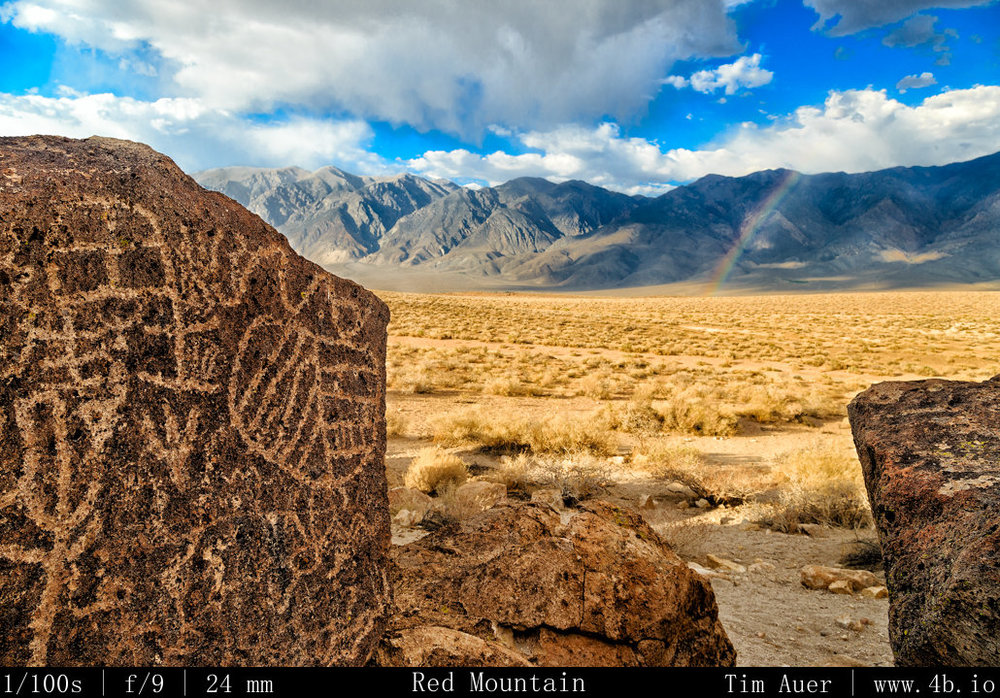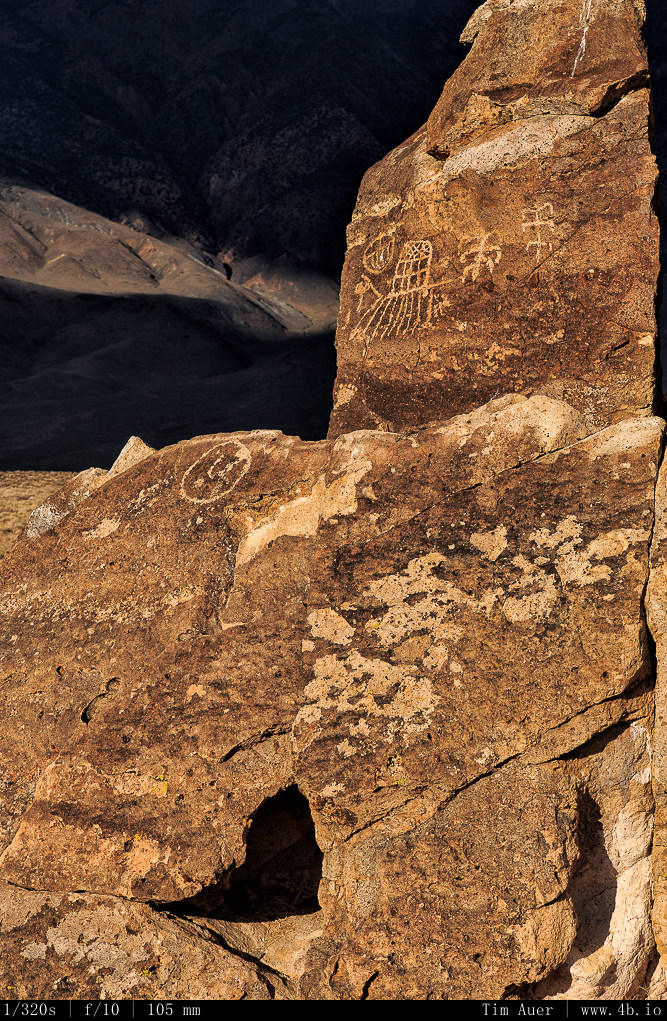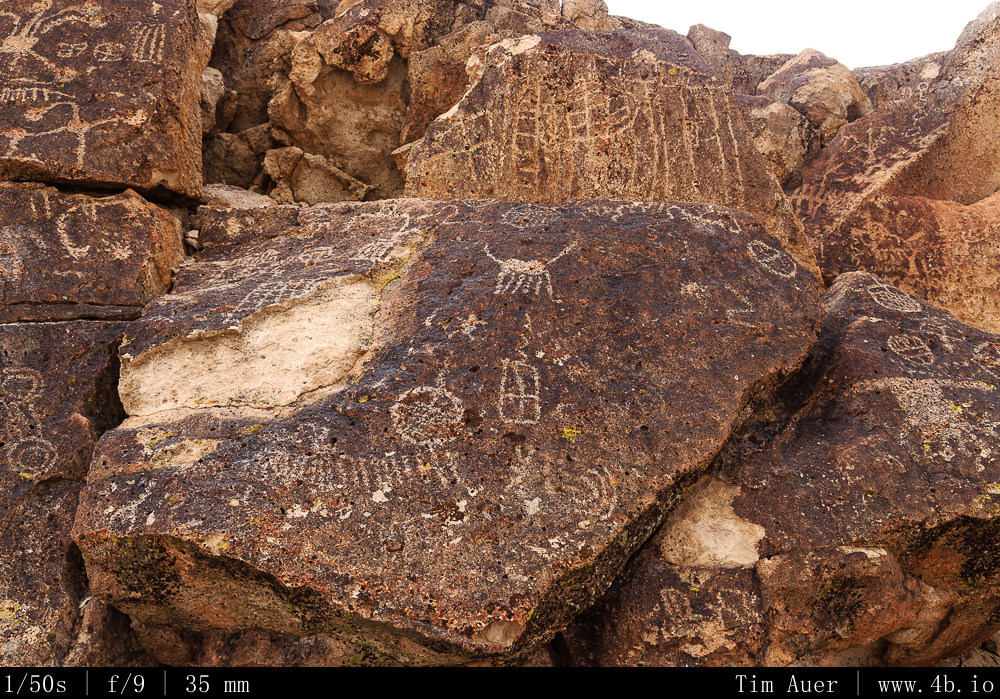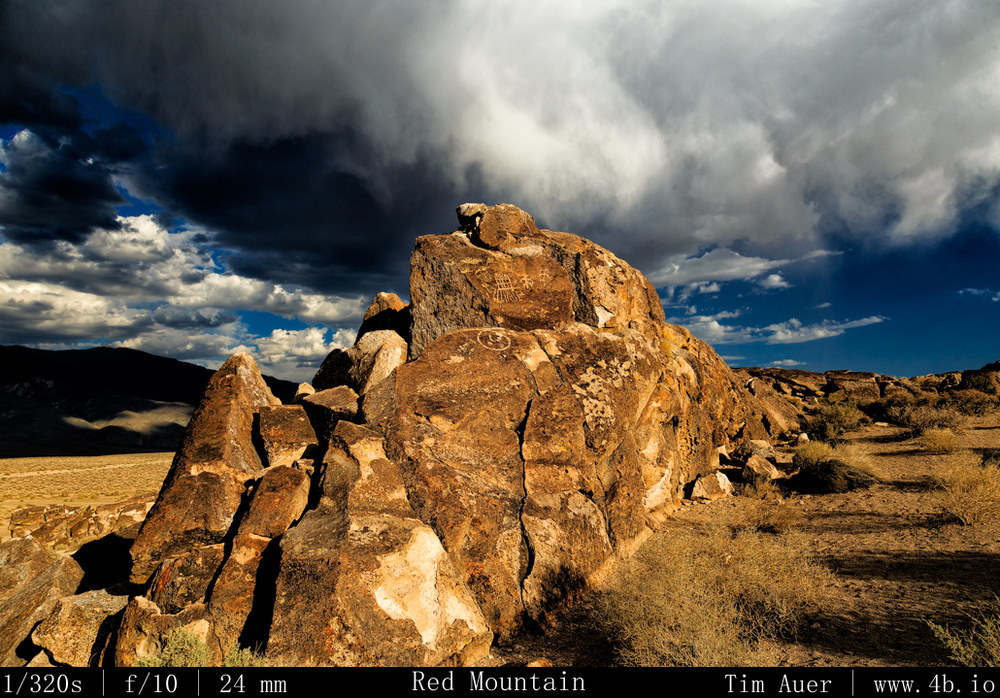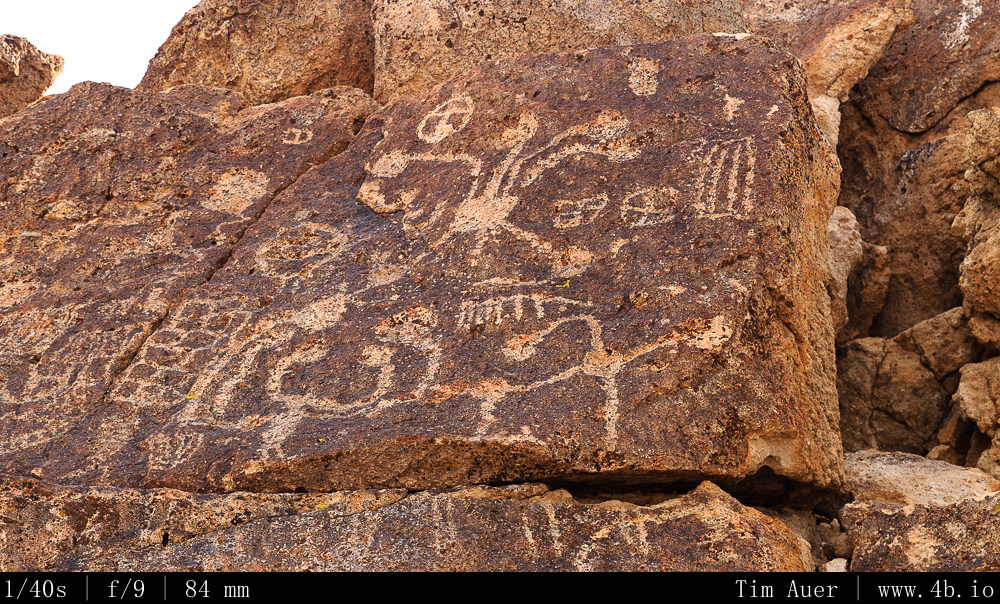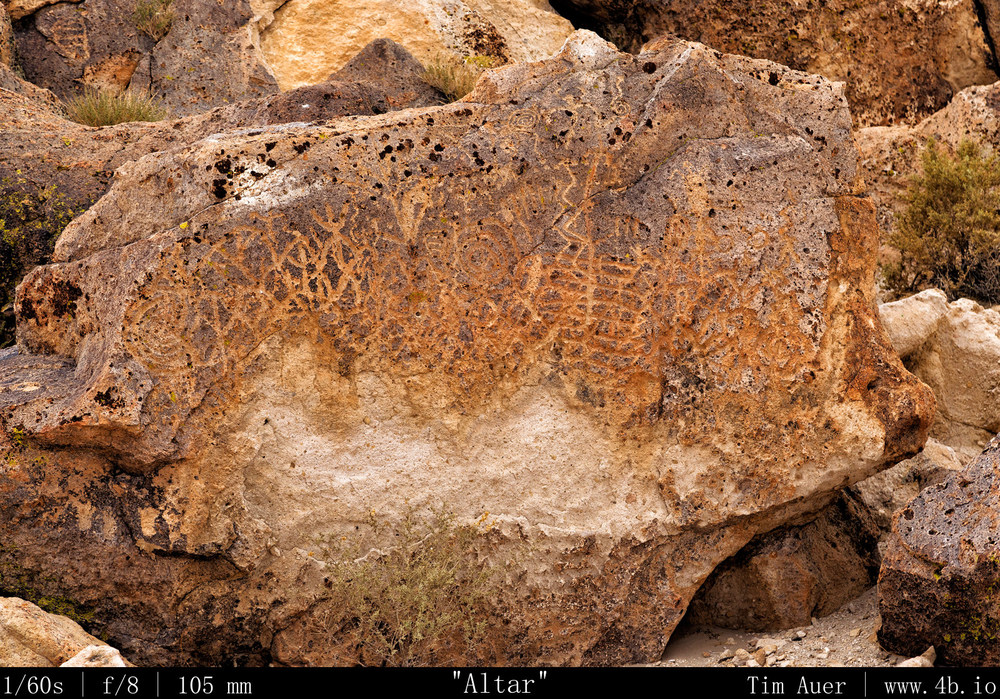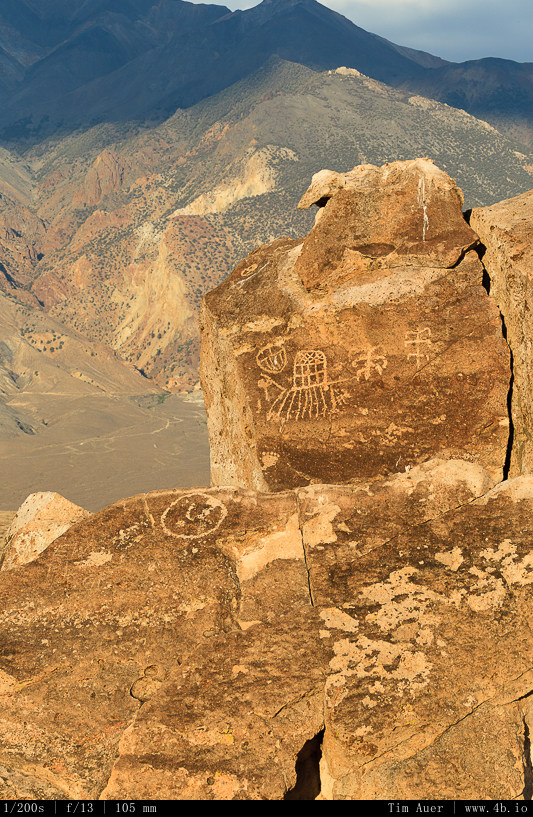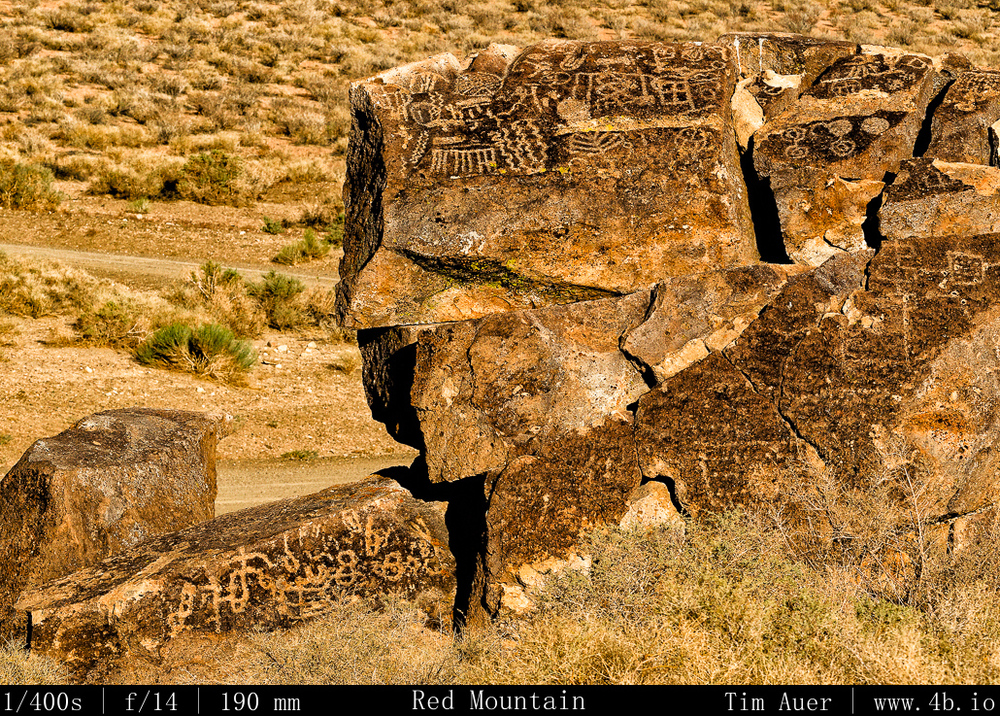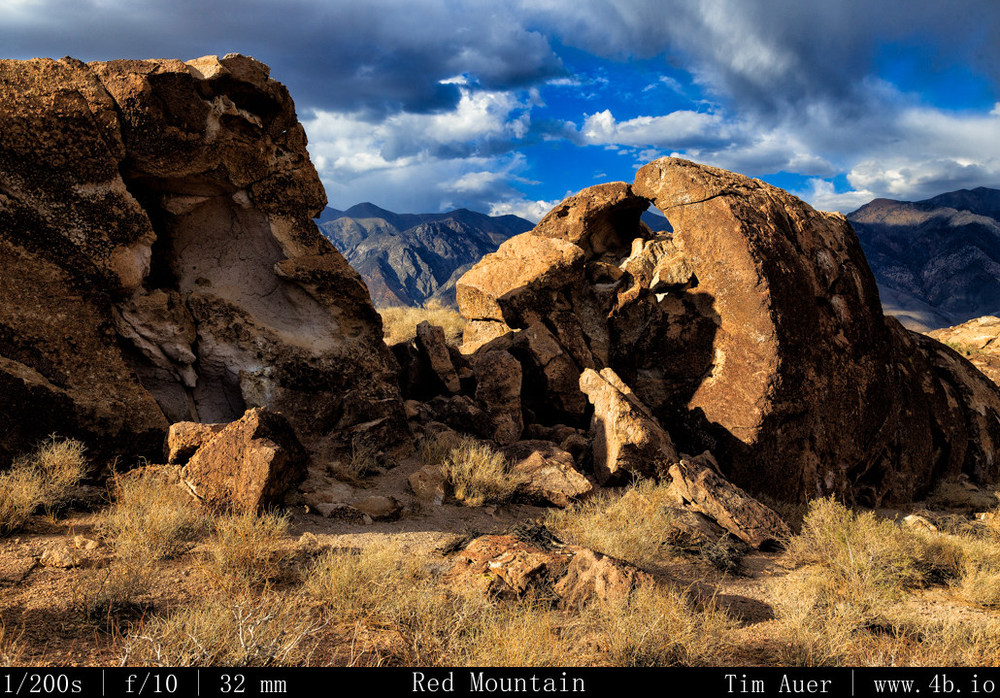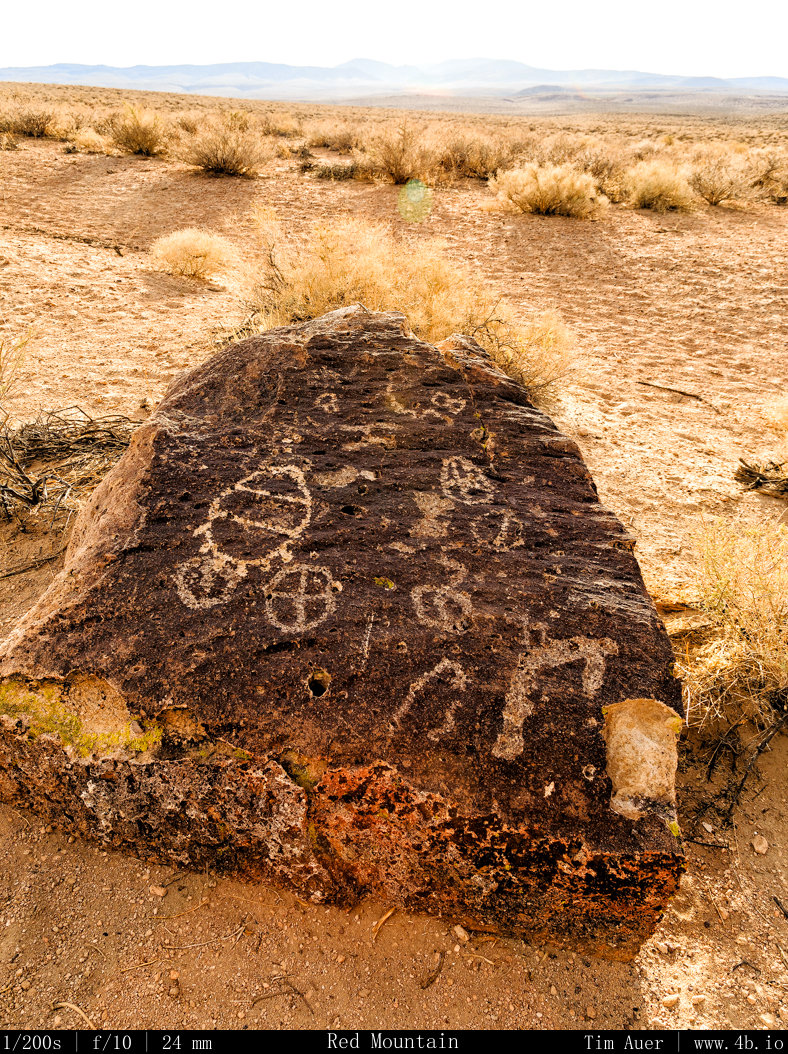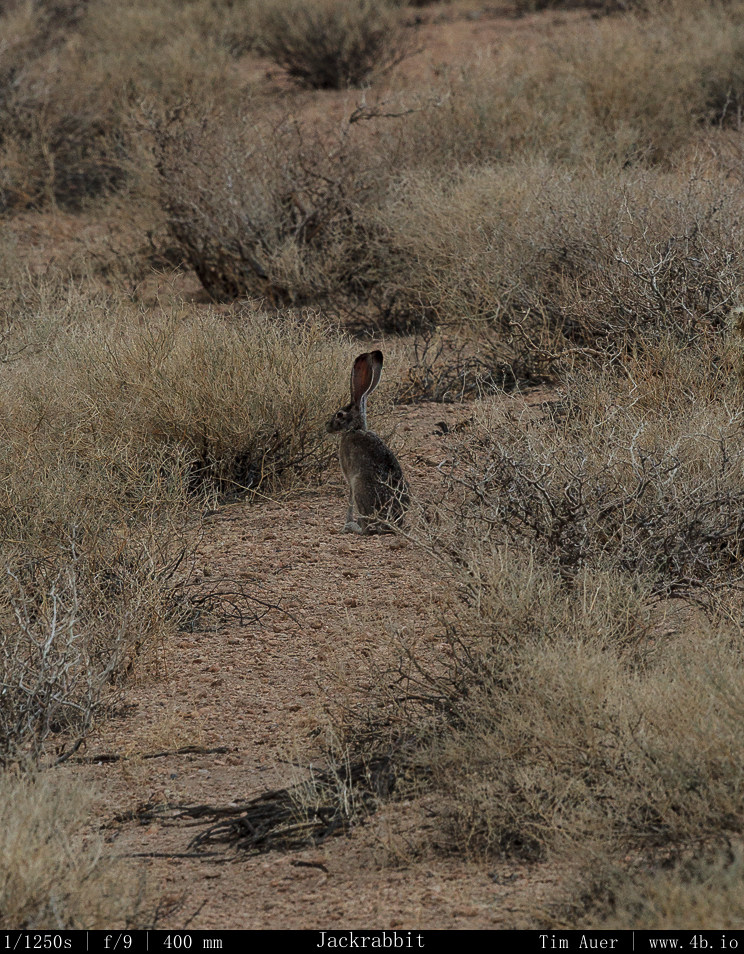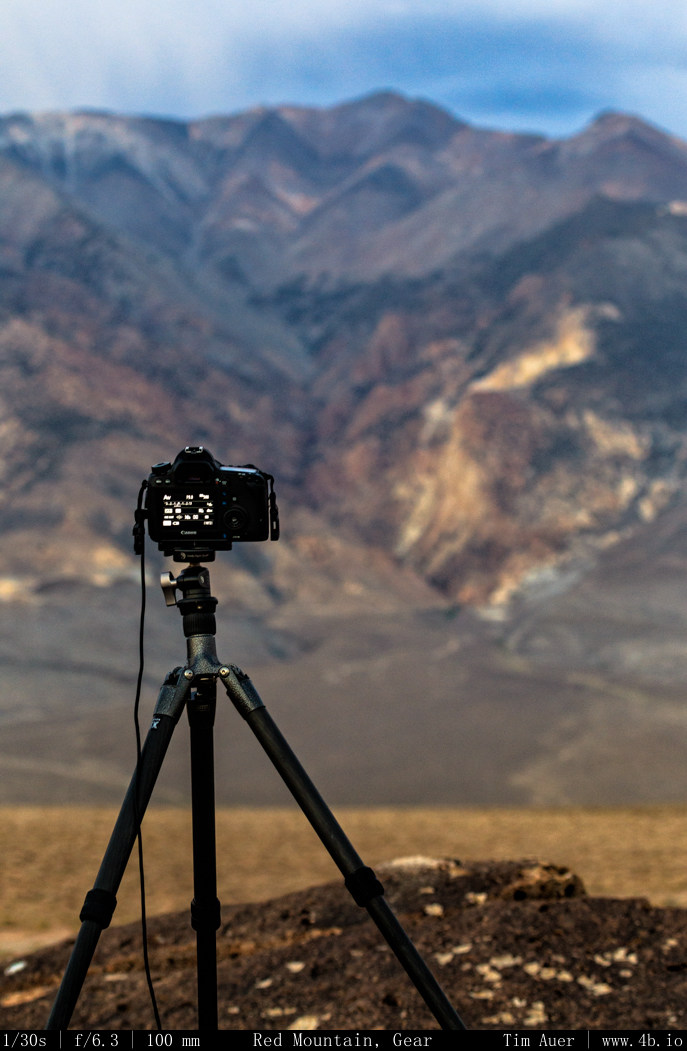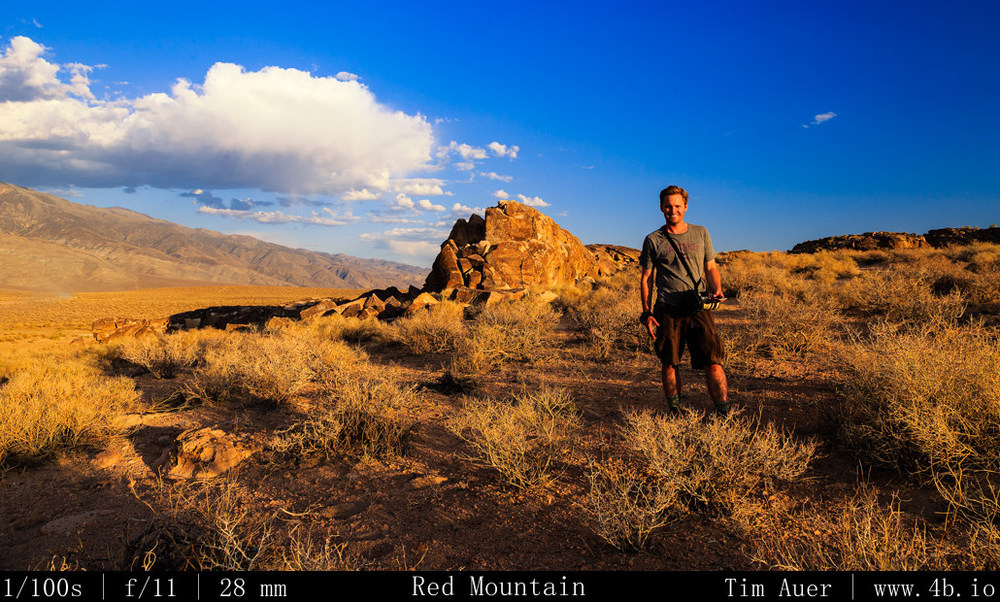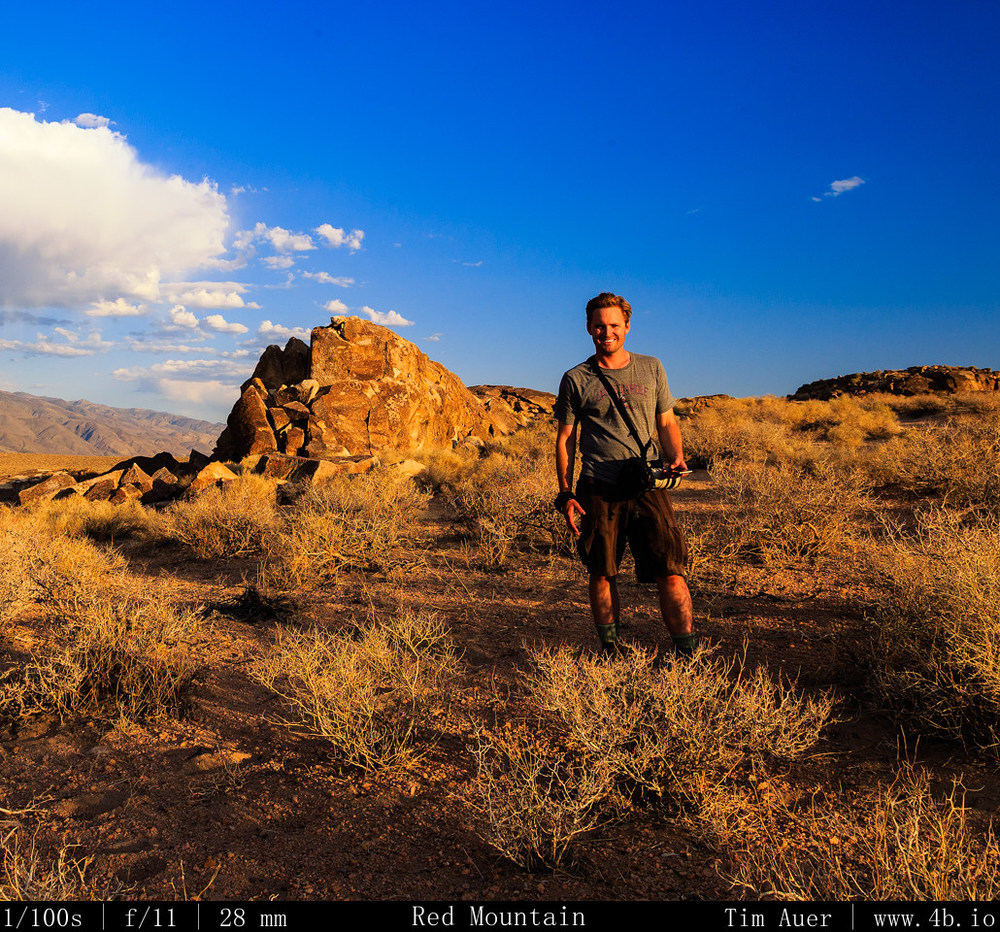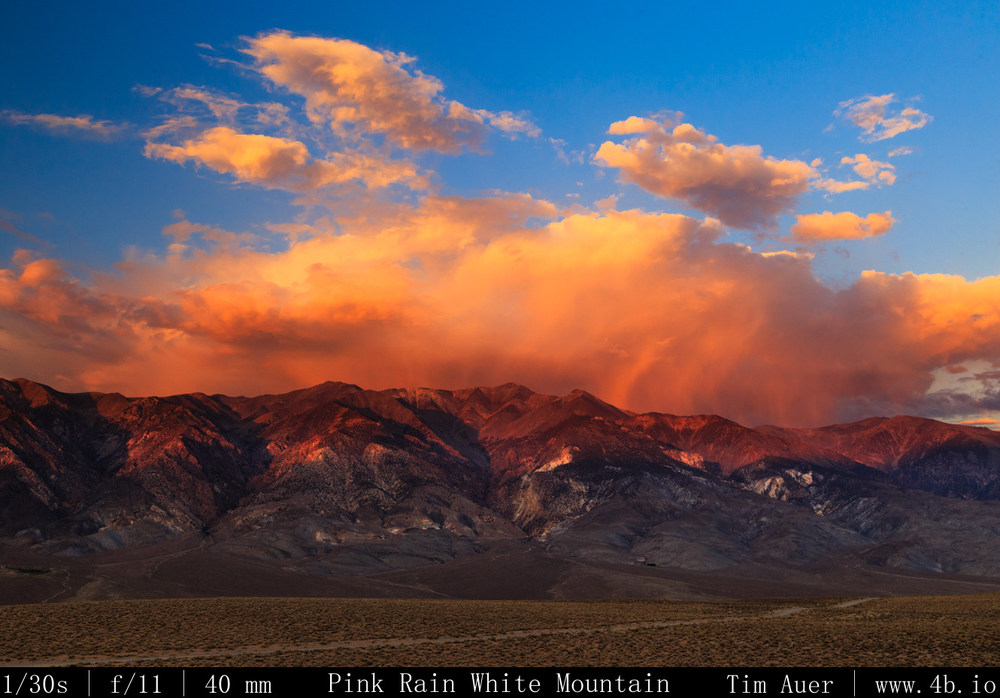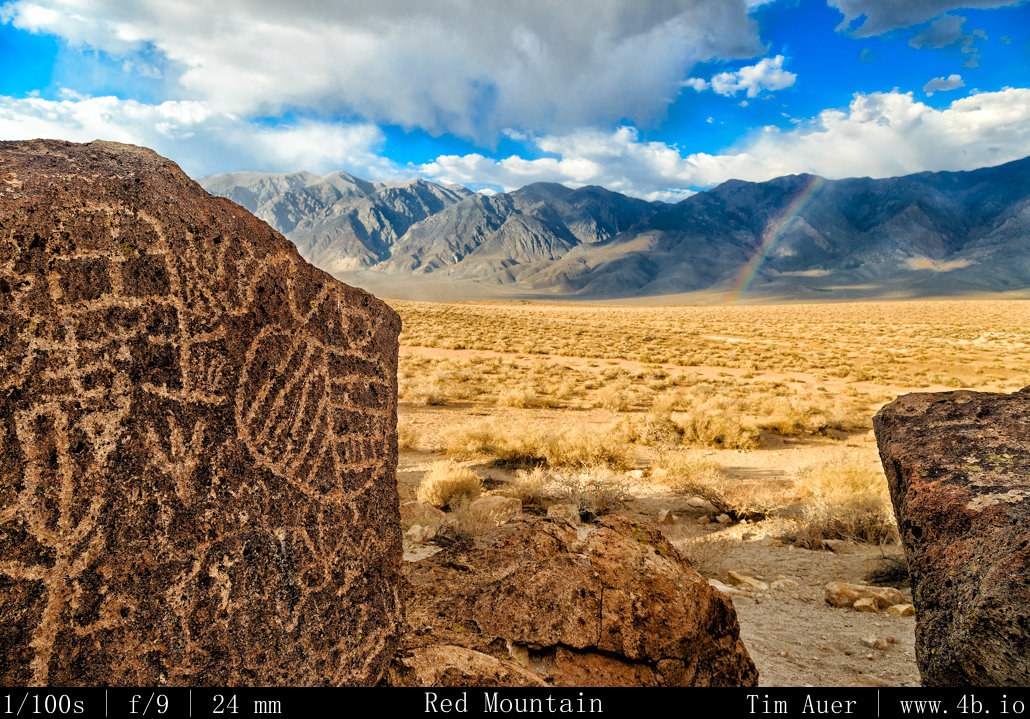In the heart of the Volcanic Tablelands near Bishop, California are the Red Mountain Fish Slough Petroglyphs, and it is probably one of the more fascinating places I have ever been.
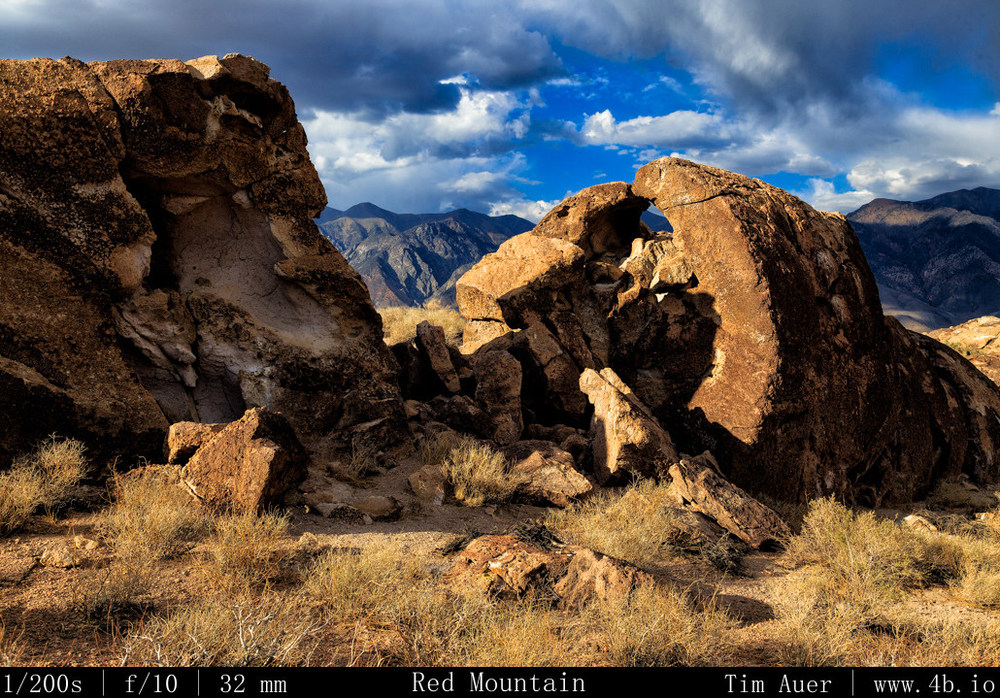
The Owens Valley was part of a trade route for the Paiute Indians, connecting what is now Northern California and the American Southwest. This area has been inhabited by the ancestors of modern Paiute for almost 9,000 years and the Fish Slough area rock carvings date back 5000 years. In my effort to understand the significance of this site, I thought it best to relate it to my European influenced perspective. I likened the Red Mountain rock formation having a role similar for the Paiutes as a temple or cathedral did for early Europeans. I can’t help but be amazed at the setting of such a place like Red Mountain. And it was this that made me draw parallels between it and the famous religious sites and cathedrals in Europe. This place is different on one level though. It seems that many of the ancient locations of the Abrahamic religions have been lost, developed over, or redeveloped. Disrupting the string of time. Diminishing its unadulterated age. Red Mountain is unchanged. It is fascinating to think about how long people have worshiped at this single location, and that the landscape appears today much like it did when the first humans walked past this outcropping of stone 9,000 years ago. Aside for the occasional farm truck stirring up dust or airplane overhead, there is hardly any evidence of the modern world here. This place has remained largely unchanged for thousands of years, with new petroglyphs being the only perceivable variation over the centuries. Thousands of years before any European cathedral was built, and even before the pyramids….the inhabitants of pre-historic America began carving art into this outcropping of granite and Bishop Tuff. As is often the case, the experience here transcends what is captured in the photos. But to give a rough idea of how spectacular the setting of this place was, the following photo is the view I had during my visit. At my back is what was likely considered the main “altar”, and looking straight ahead were the dramatically lit White Mountains draped in a rainbow.
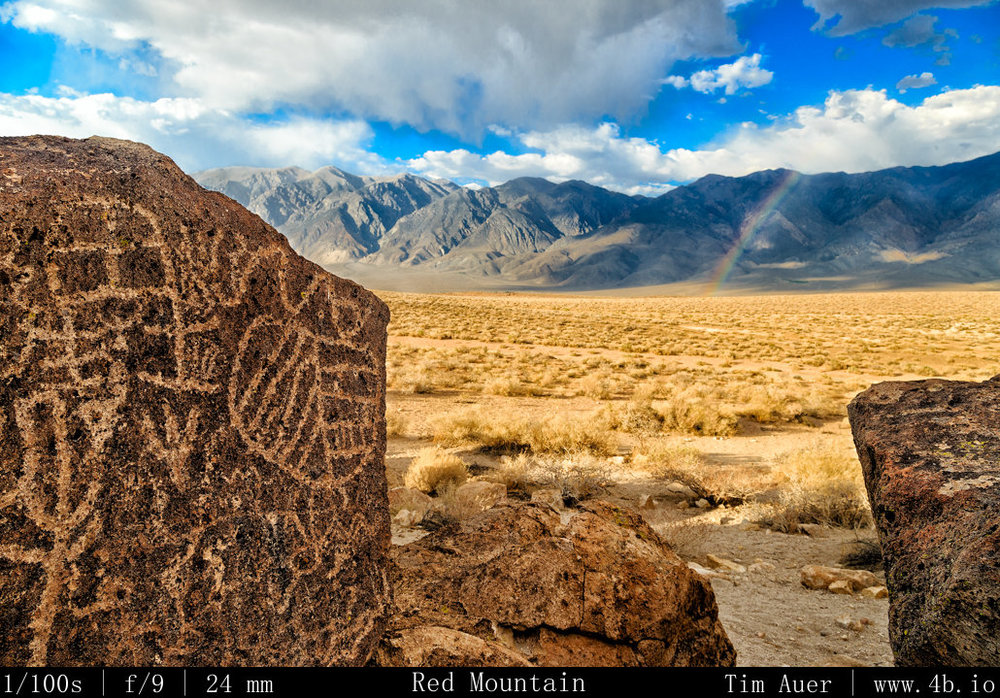
When I arrived at Red Mountain, I was completely alone. After about an hour to myself, a family of four drove up (husband, wife and son and daughter). The father was native American/Indian descent (Arizona), and he was very passionate about his opportunity to visit this site. During our conversation, he explained the cultural significance of the site, interpretations of many of the carvings, and also how this stone can be sold for a lot of money on the blackmarket in Europe. Really disgusting that people cut 5000 year old artifacts for this own selfish motivations. If you look closely at some of the photos attached, it is possible to see where people have vandalized the petroglyphs, by trying to “cut” them out for blackmarket purposes.
Specifically, in the image titled “Altar“, you can see some of the defaced stone. This “Altar”, mentioned above in the context of the rainbow view, was the centerpiece of the rock formation, and appeared to be positioned like an altar in the Christian church sense. This was where the shaman or priest would lead ceremonies. The carvings at the Altar is also one of the older carvings at this site and its design was particularly meaningful. The entire carving was completely connected. Let me explain: Most of the other figures at Red Mountain were discrete, individual carvings. These altar carvings were completely connected, top to bottom, left to right. This continuity was symbolic for the Indians who wanted to connect the ground to the heavens. Thereby, providing a channel for their spirits to flow, connecting them with their ancestors. This is also why the top and bottom of these carvings have points, or arrows, directed at the ground or up to the sky.
I learned all of this while talking to this guy. It was really nice that he was there to explain it to me. His son, probably a 5 year old, was finding rabbit bones and looking for rattlesnakes. His daughter, probably 8 years old, kept asking her dad if they could leave because the hotel swimming pool closed at 8PM. So if they left now, they could get an hour and half of swimming time.
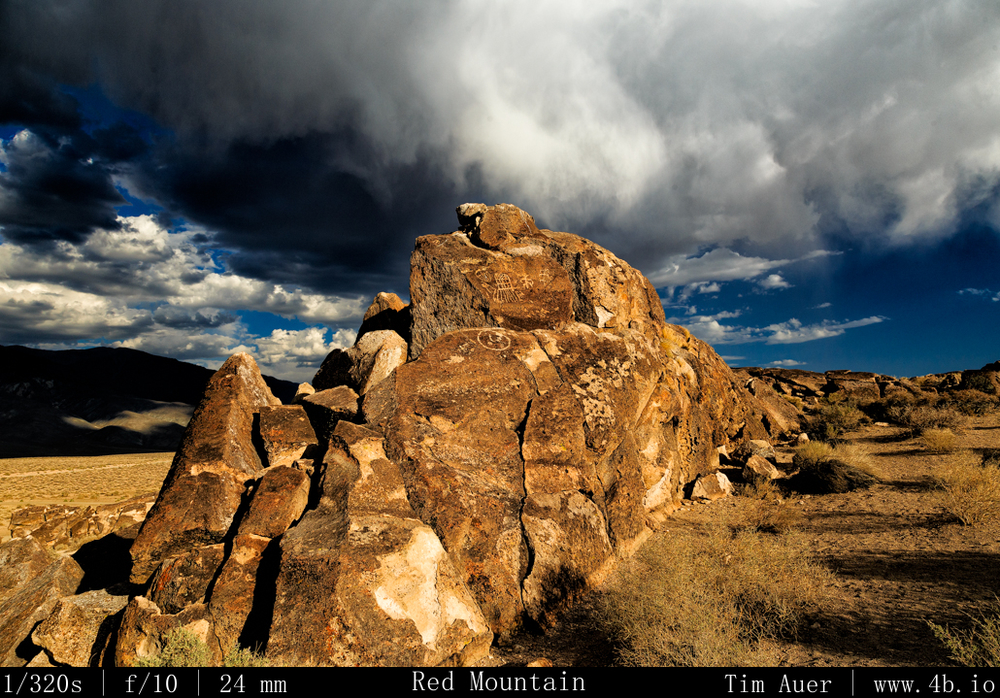
Photography
Due to the high Sierras due west, the sun sets very fast at this location. There were a few minutes of quality, evening light able to bring out the brilliant red granite color, but before long the sun was behind the mountains. However, due East are the White Mountains, also 14,000 footers, and due to their height, they are able to hold on much longer to the sunlight. Once the Red Mountain was shroud in shadow of the Sierra Nevadas, I pointed my lenses in the eastern direction as the canyons between the White Mountains’ peaks transformed into vibrant red colors. The light here is only useful in photographic terms at sunrise and near sunset, and the lack of shade would let it get quite hot and miserable mid day in summer. This place is best visited when the light is gentle, and temperature pleasant enough to let you comfortably contemplate the rich human history of the site.
For more information: Visit the Bureau of Land Management Field Office in Bishop
http://www.blm.gov/ca/st/en/fo/bishop/archeology.html

